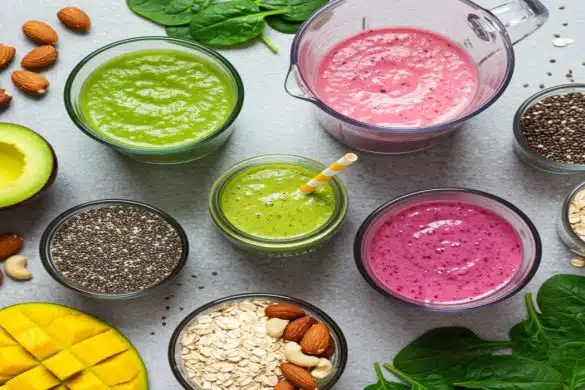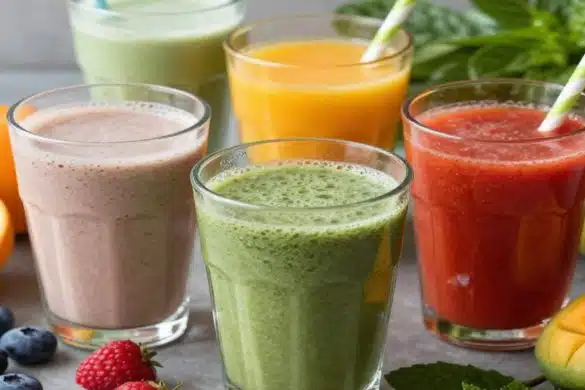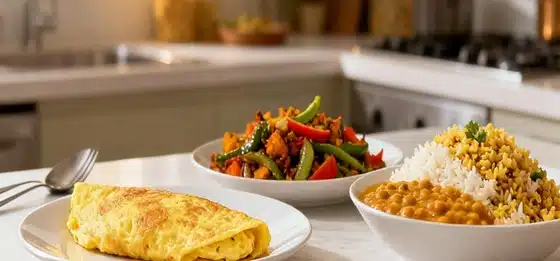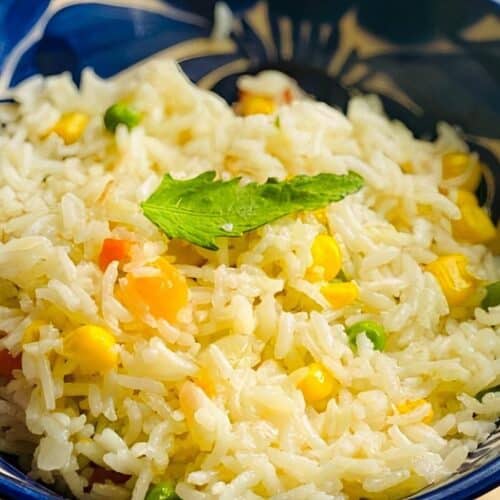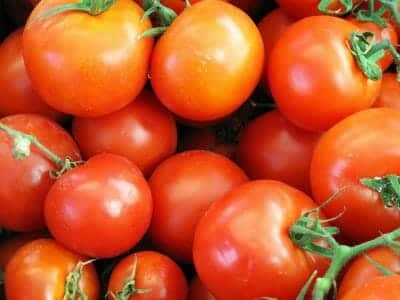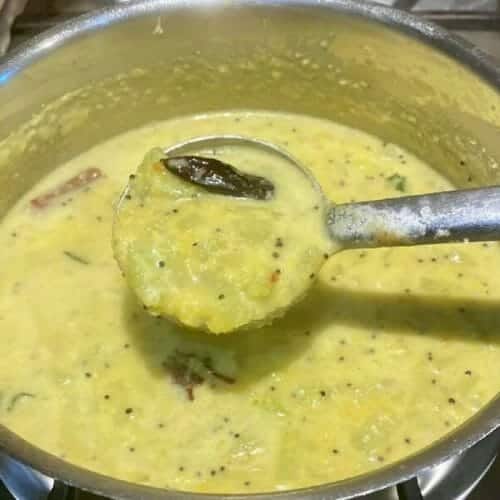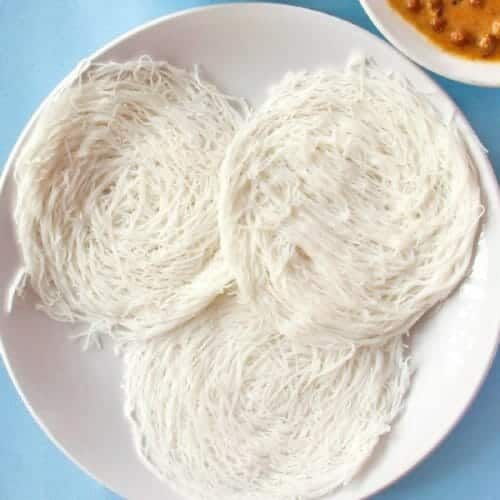The Navratri festival, a celebration dedicated to the goddess Durga, is a time for reflection, devotion, and of course, delicious food! While fasting is a significant part of this festival, it doesn’t mean compromising on taste.
Numerous fasting and no garlic recipes can tantalize your taste buds while adhering to the dietary restrictions observed during these auspicious nine days. In this guide, we bring you traditional Navrarti vrat recipes or fast recipes that are both delicious and easy to prepare. These old favourites and special recipes utilize ingredients permissible during Navratri fasting to create wholesome and satisfying meals. Let us now discuss the top 9 Navratri recipes for 9 days of festivity.
1. Sabudana Khichdi: For the first day of Navratri

Sabudana Khichdi
Begin your Navratri fast with the quintessential sabudana khichdi, a light and flavorful dish perfect for the first day. Made with tapioca pearls (sabudana), potatoes, and peanuts, and seasoned with sendha namak, this khichdi provides energy and is easy to digest. Soaked sabudana, when cooked to perfection, offers a delightful texture that complements the crunch of peanuts. The subtle flavours of cumin and green chillies enhance the taste, making it a satisfying meal.
Recipe of Sabudana Khichdi
- Soak 1 cup sabudana for 4-5 hours, then drain.
- Sauté diced potatoes in ghee, add cumin seeds, green chillies, and soaked sabudana.
- Mix in roasted peanuts, salt, and sugar, and cook until translucent.
- Garnish with lemon juice and coriander, and serve hot.
Pro Tip: You can also explore other sabudana-based recipes like sabudana vada for variations during the fasting days.
2. Kuttu Ka Dosa: A Crispy Delight for Day Two
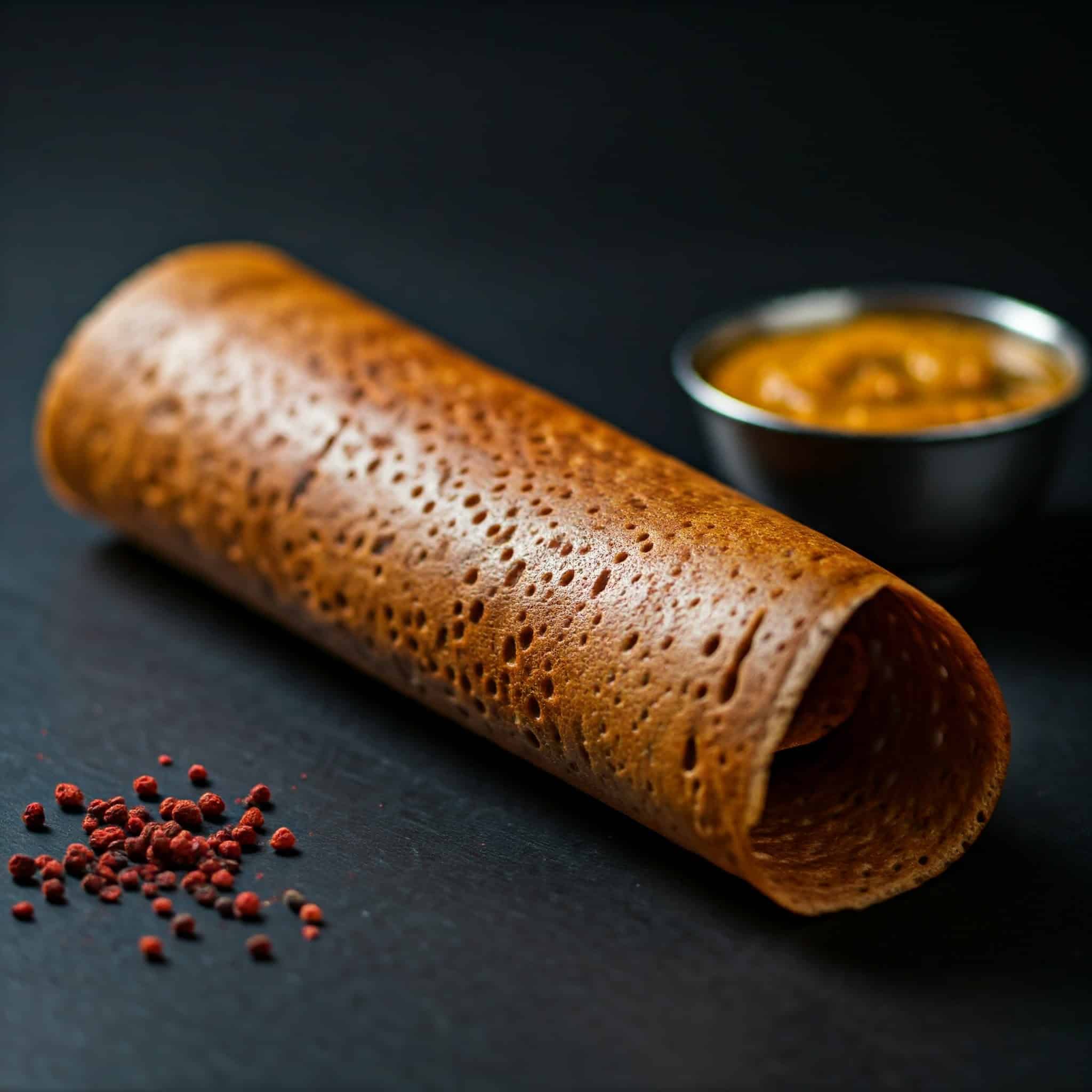
Kuttu Ka Dosa
On the second day, take a trip down to South India with the crispy and savoury kuttu ka dosa. Made from kuttu ka atta (buckwheat flour), this gluten friendly recipe can become the staple for a dosa fan during Navratri fasting. Combined with mashed potatoes for a softer texture, the dosa batter is seasoned with rock salt and often spiced with green chillies for an extra kick.
Recipe of Kuttu Ka Dosa
- Make a batter with 1 cup kuttu ka atta (buckwheat flour), mashed potatoes, rock salt, and finely chopped green chillies.
- Heat a pan and spread a ladleful of the batter thinly to form a dosa
- Cook until crispy on both sides.
- Serve hot with coconut chutney or potato curry. Enjoy the crispy delight!
Pro Tip: Experiment with different fillings, such as grated paneer or a mixture of mashed potatoes and spices, to add a personal touch to this crisp dosa recipe.
Also read: Oats Rava Dosa Recipe
3. Singhare Ke Atte Ka Samosa: A twist for the third day
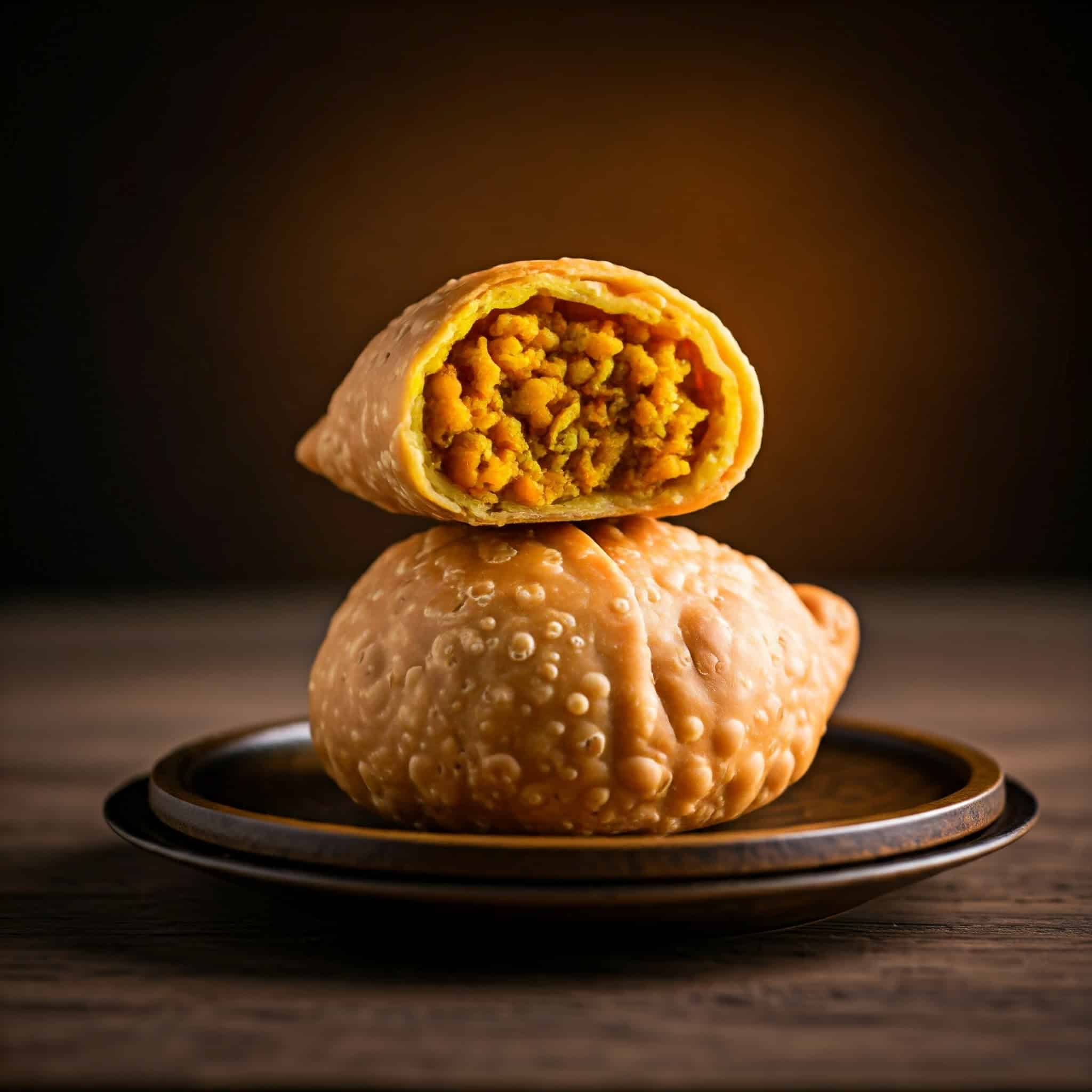
Singhare Ke Atte Ka Samosa
Surprise your taste buds on the third day with the unique singhare ke atte ka samosa. This Navratri special samosa is made with singhare ka aata (water chestnut flour), giving it a distinct nutty flavour and a crispy texture. The filling typically consists of potatoes, dry fruits, and a blend of aromatic spices. These samosas make a perfect accompaniment to a cup of hot chai and are sure to impress your family and friends.
Recipe of Singhare Ke Atte Ka Samosa
- Prepare a dough with 1 cup singhare ka atta (water chestnut flour), salt, and water.
- Make a filling with boiled potatoes, dry fruits, and spices.
- Stuff the filling into rolled-out dough, fold into samosa shapes, and deep fry until crispy.
- Serve hot with a cup of chai.
Pro Tip: Don’t hesitate to experiment with the filling; you can add mashed sweet potatoes or even a savoury filling made with paneer and sendha namak for a unique twist to this fresh recipe.
4. Aloo Ki Kadhi: Comfort Food for the Fourth Day
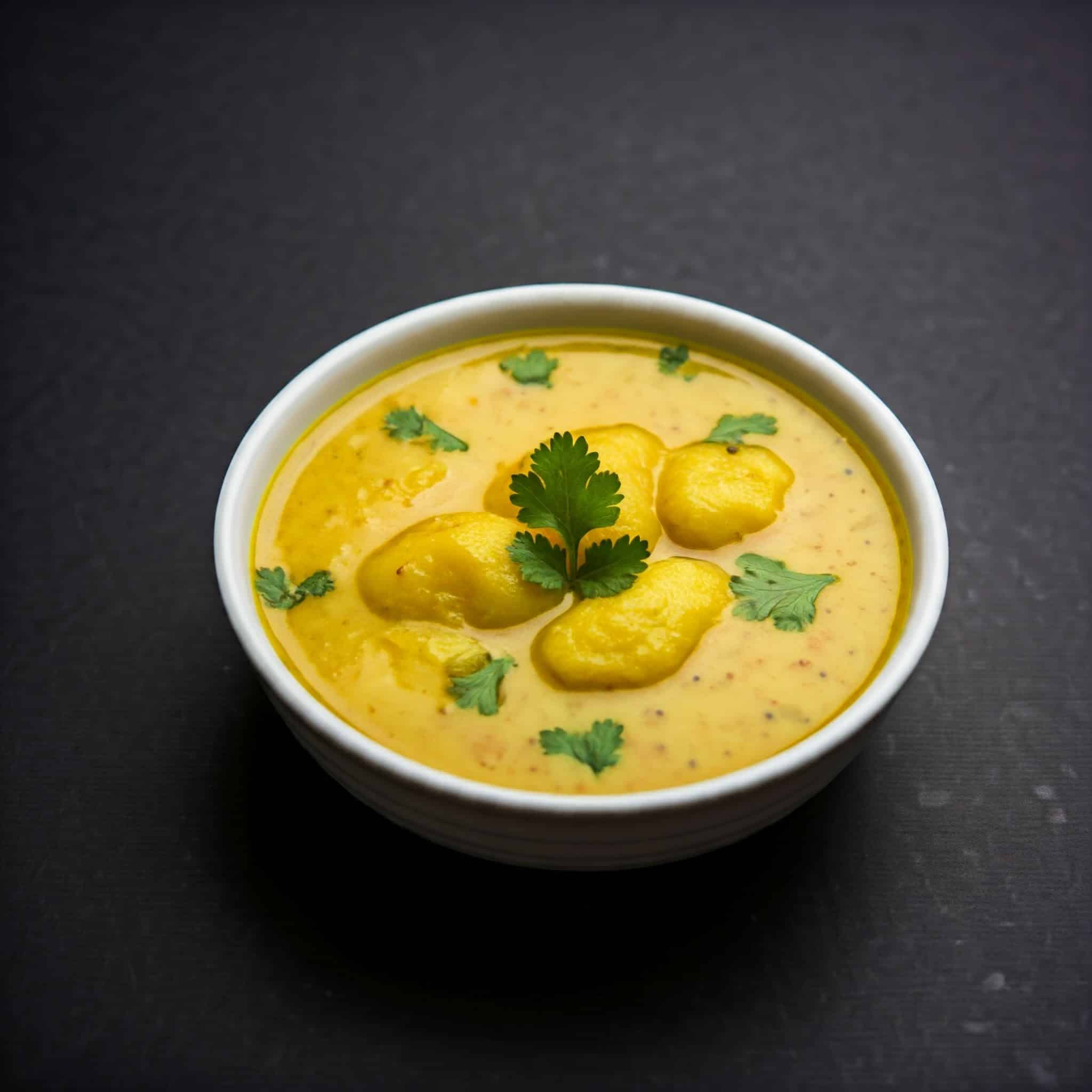
Aloo Kadhi
Enjoy the comforting flavours of aloo ki kadhi on the fourth day of Navratri. Made with potatoes, yoghurt, and a blend of spices, this light and creamy curry is sure to warm your heart. The tanginess of the yoghurt balances the richness of the gravy, creating a symphony of flavours. This delicious aloo recipe is easy to digest, making it ideal for fasting days. You can adjust the consistency of this lovely curry to your liking, making it thinner or thicker.
Recipe of Aloo Ki Kadhi
- Mix yoghurt, water, and singhare ka atta to form a smooth kadhi base.
- Add boiled potato cubes, cumin seeds, ginger, green chillies, and salt.
- Simmer the mixture until thickened and creamy, stirring occasionally.
- Serve this healthy aloo kadhi hot, garnished with fresh coriander.
Pro Tip: This delicious aloo dish is an excellent side dish for kuttu ki puri or samwat ke chawal. This is a great twist to the boring aloo ka falahar and aloo rasedaar.
5. Banana Walnut Lassi: To refresh on day five
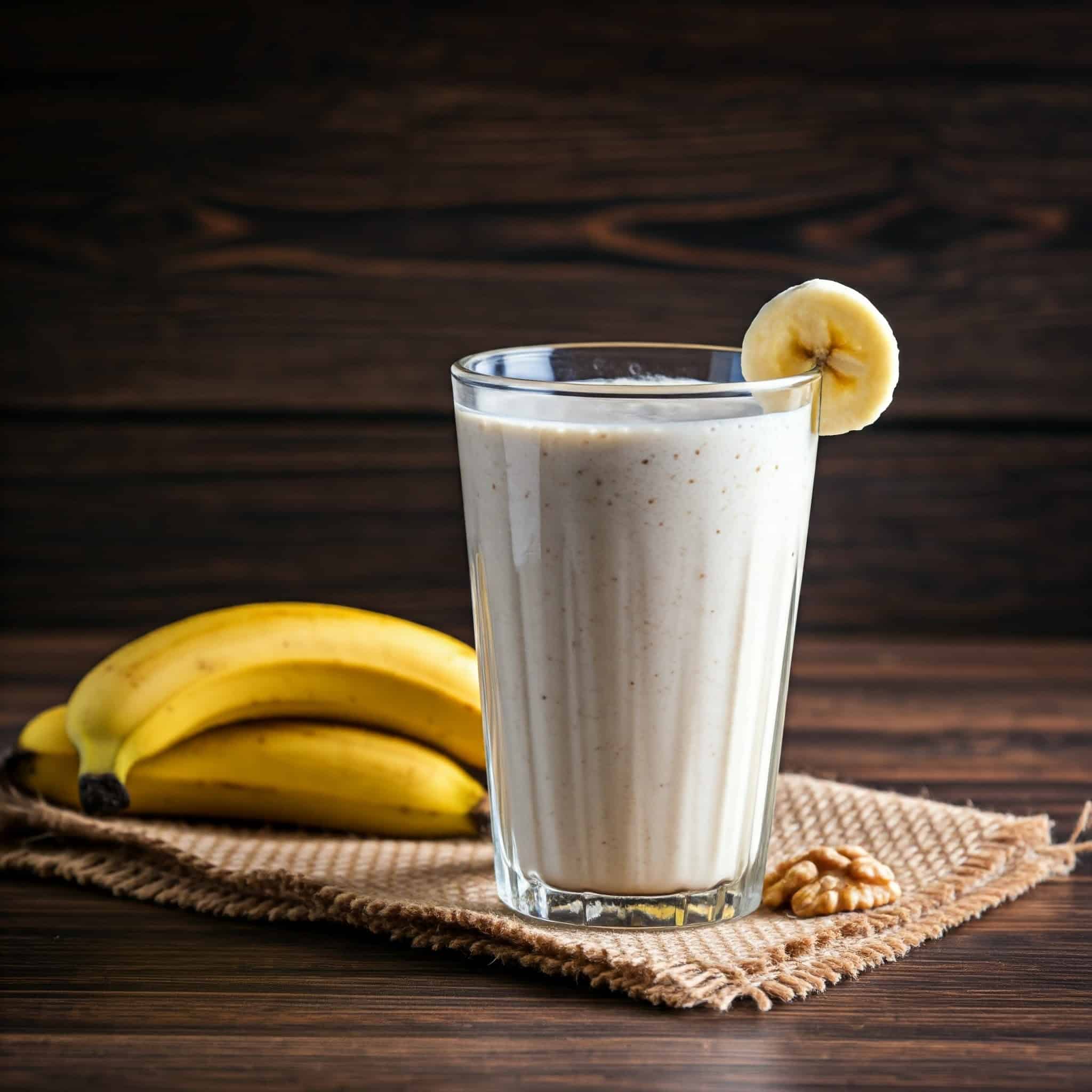
Banana walnut lassi
As you reach the fifth day of fasting, rejuvenate your senses with a refreshing banana walnut lassi. This healthy lassi is a great mix of ripe bananas, creamy yoghurt, and crunchy walnuts, making it a powerhouse of energy and flavour. The natural sweetness of bananas eliminates the need for added sugar, while the goodness of yogurt aids in digestion, a boon during the fasting season.
Recipe of Banana Walnut Lassi
- Blend ripe bananas, yoghurt, walnuts, and a pinch of cardamom powder until smooth.
- Add chilled water or milk to adjust consistency and blend again.
- Pour into a glass, garnish with crushed walnuts, and serve cold.
Pro Tip: You can customize it by adding a pinch of cardamom powder or a few saffron strands for a fragrant twist.
Also read: 5 Must-Try Lassi Varieties for a Flavourful Summer
6. Arbi Kofta with Mint Yoghurt Dip for the sixth Day
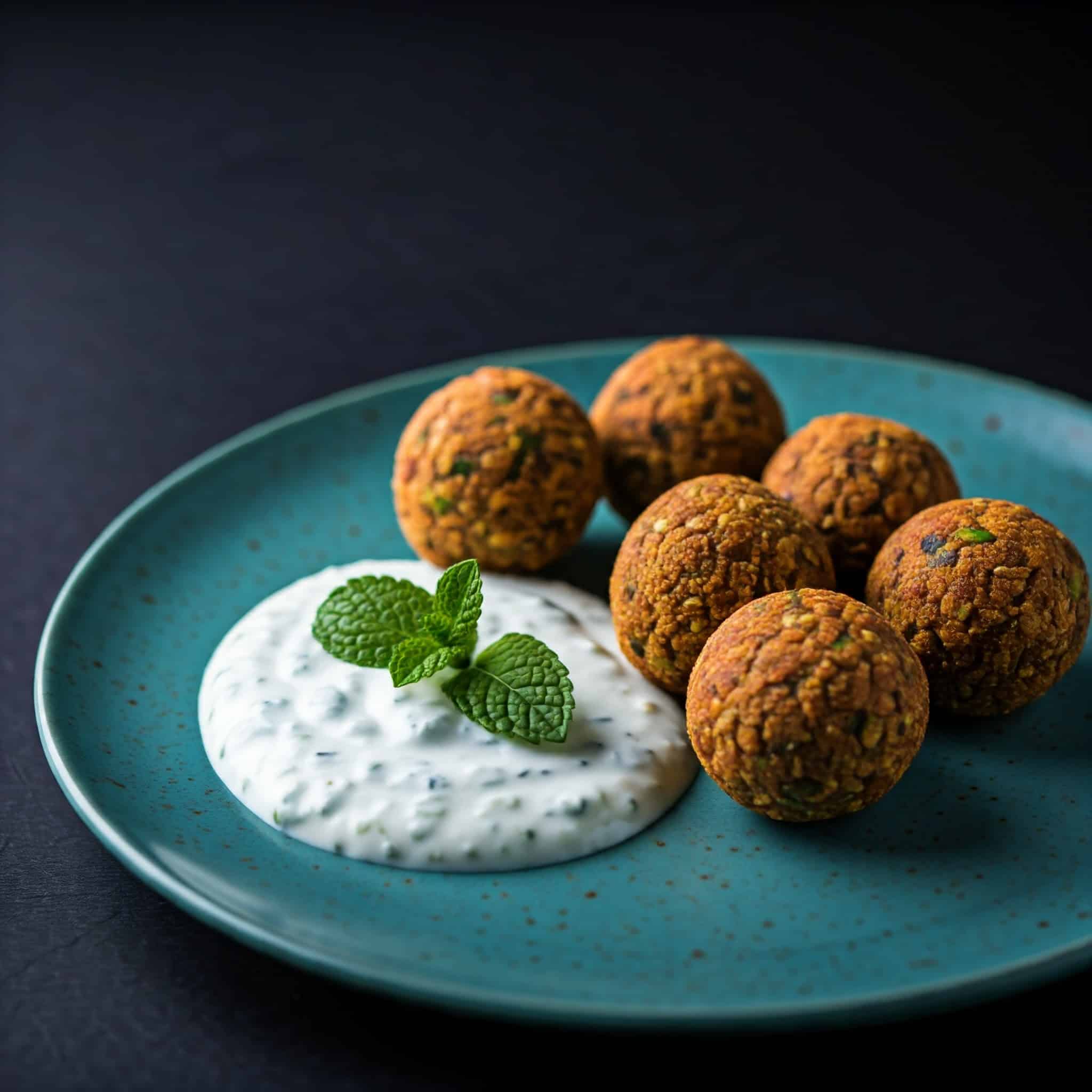
Arbi Kofta
For the sixth day of Navratri, treat yourself to the flavorful and unique arbi kofta with mint yoghurt dip. This delicious arbi kofta recipe uses colocasia roots, which are boiled, mashed, and then shaped into bite-sized koftas. The refreshing mint yoghurt dip adds a zesty and cooling element to the dish. The mint’s freshness perfectly complements the earthy flavour of arbi, making for a delightful culinary experience.
Recipe of Arbi Kofta and Mint Yoghurt
- Mash boiled arbi (colocasia) with spices like cumin powder, coriander powder, rock salt, finely chopped green chillies, and a pinch of garam masala
- Shape into koftas, and shallow-fry or bake until golden.
- For the dip, blend yoghurt with fresh mint leaves, cumin powder, and salt.
- Serve the crispy arbi koftas with the mint yoghurt dip for a refreshing, flavorful treat.
Pro Tip: You can add finely chopped ginger and fresh coriander leaves for extra flavour.
7. Vratwale Chawal Ka Dhokla: For a light seventh day
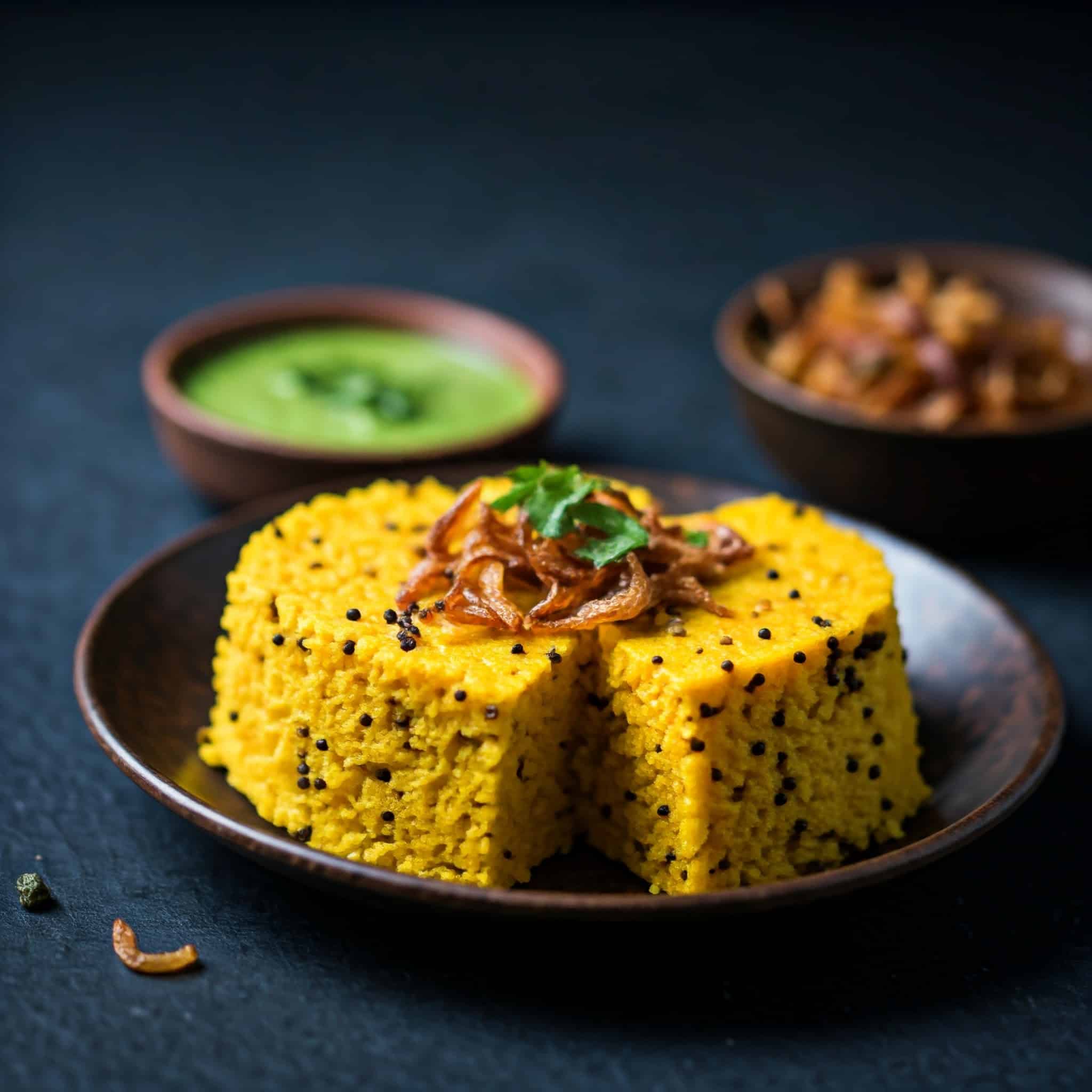
Vrathwale Chawal Ka Dhokla
On the seventh day, indulge in a light and fluffy vratwale chawal ka dhokla. This steamed snack utilizes sama ke chawal (barnyard millet), making it a healthy and wholesome option for the vrat season. The dhokla recipe involves fermenting the batter for a light and airy texture. Enjoy it with a side of green chutney or sprinkle some freshly chopped coriander for a burst of freshness.
Recipe of Vratwale Chawal Ka Dhokla
- Prepare a batter with ground sama ke chawal (barnyard millet), yoghurt, and a pinch of rock salt
- Let it ferment for a few hours.
- Steam the batter until fluffy, then temper with ghee, mustard seeds, curry leaves, and green chillies.
- Cut into pieces and serve hot with green chutney.
Pro Tip: Adding a pinch of baking soda or Eno fruit salt just before steaming can also enhance the texture,
8. Kebab-e-Kela: A Unique Treat for the Eighth Day
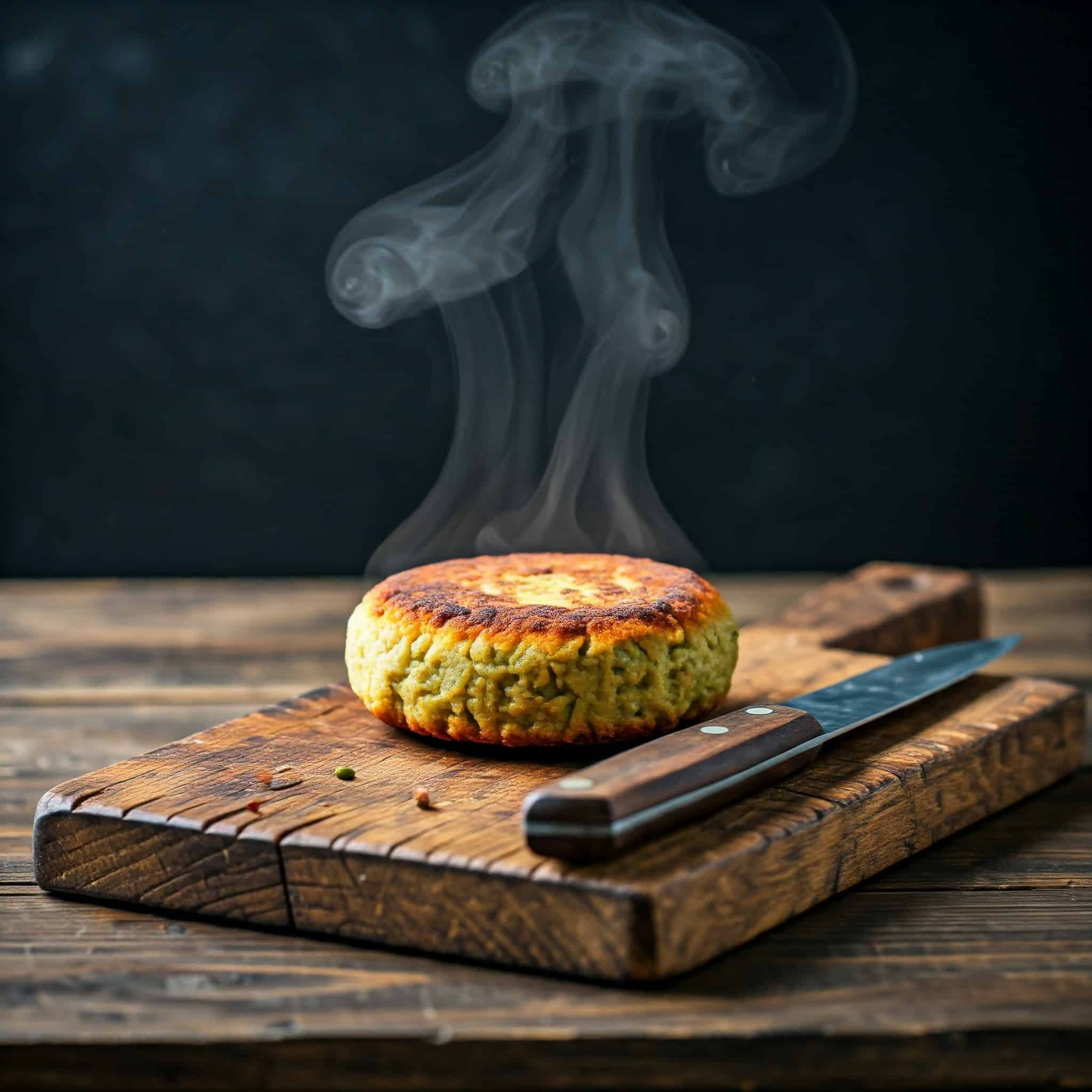
Kebab e kela
As you approach the end of your fast, celebrate the eighth day with the unique and flavorful kebab-e-kela. These banana kebabs utilize raw bananas, mashed and seasoned with fasting-friendly spices. This special dish is a testament to the creativity of fasting recipes, proving that you can enjoy delicious and innovative meals even while adhering to dietary restrictions. The sweetness of ripe bananas blends beautifully with the savoury spices, creating a unique flavour profile that will tantalize your taste buds.
Recipe of Kebab-e-Kela
- Mash raw bananas and mix them with spices like cumin, coriander powder, rock salt, and finely chopped green chillies.
- Shape into kebabs.
- Shallow-fry or bake until golden brown.
- Serve hot as a unique and flavorful fasting treat.
Pro Tip: For extra crispiness, add a tablespoon of gram flour (besan) to the banana mixture
Also read: Pumpkin Kebabs Recipe
9. Sonth Ki Chutney: To spice up the last day
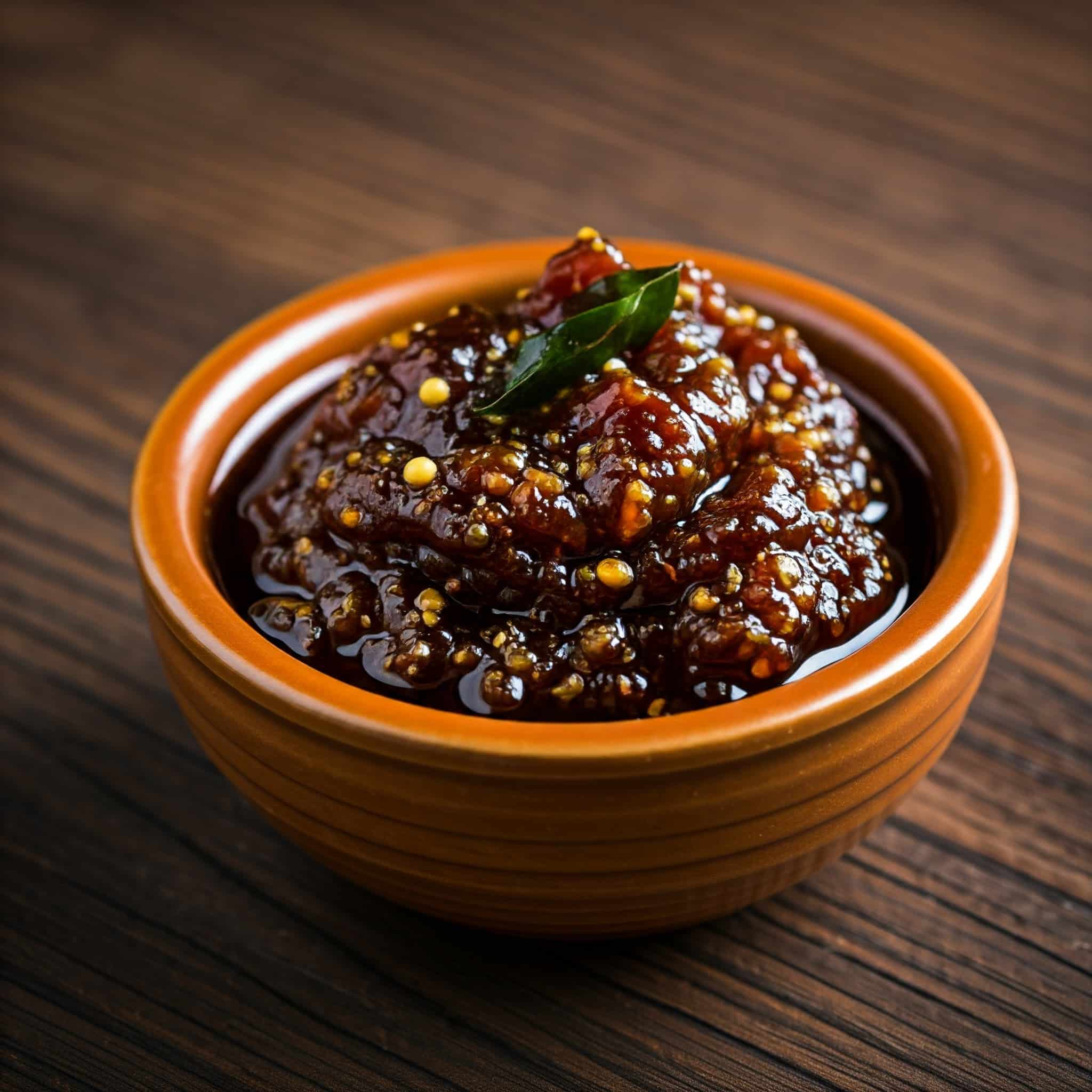
Sonth ki chutney
On the ninth and final day of Navratri, add a zing to your meals with a tangy and spicy sonth ki chutney. This chutney, made from dried ginger powder, jaggery, and a blend of spices, is a staple in North Indian Navratri fasting. The warmth of ginger and the sweetness of jaggery create a flavour combination that is both comforting and invigorating. It acts as a digestive aid and is a perfect alternative to regular chutneys that often use garlic and onions.
Recipe of Sonth Ki Chutney
- Mix dried ginger powder (sonth) with jaggery, lemon juice, and spices like cumin powder, chilli powder, and rock salt.
- Cook until the jaggery melts and the mixture thickens.
- Let it cool and serve as a tangy and spicy chutney with your fasting meals.
Pro Tip: Pair sonth ki chutney with kuttu puri, sabudana vada, or even plain yoghurt for a burst of flavour.
Conclusion
Navratri is a time of joy and celebration, and what better way to honour this festival than with traditional recipes passed down through generations? From the comforting Aloo Ki Kadhi to the unique Kebab-e-Kela, each dish holds significance in Navratri observance. Want more such recipes? Check out our website here.
Frequently Asked Questions
What makes Sabudana Khichdi a popular choice for Navratri fasting?
Sabudana khichdi is light, easily digestible, and provides energy during the fasting season of Navratri. Made with tapioca pearls, rock salt, and minimal spices, this Navratri vrat recipe is a perfect accompaniment to yoghurt or chutney.
Can I use regular salt in Navratri recipes?
Traditionally, sendha namak (rock salt) is preferred over regular salt in Navratri fasting recipes due to its purity and unprocessed nature.
How can I make my Navratri meals more nutritious?
Incorporate alternative flours like kuttu ka atta or water chestnut flour in your regular pooris to make them into the healthy kuttu ki poori. Include fruits, nuts, and dairy in forms like smoothies or healthy lassi for added nutrition.
Are there any vegan options for Navratri recipes?
Yes, plenty of vegan options are available! From South Indian sundals to North Indian main courses like aloo ki sabzi without yoghurt, you can easily find vegan fasting recipes to maximize the joy of the festival. There is also the popular sabudana kheer which is a delicious kheer option for all sweet lovers. This low fat kheer recipe can be easily made vegan.
What is the significance of each day’s recipe in Navratri observance?
While the customs of the fasting season of Navratri dictate no rules as such, the variety allows for a balanced and diverse culinary experience during the nine days of Navratri observance. This is true both in North India and South India.

